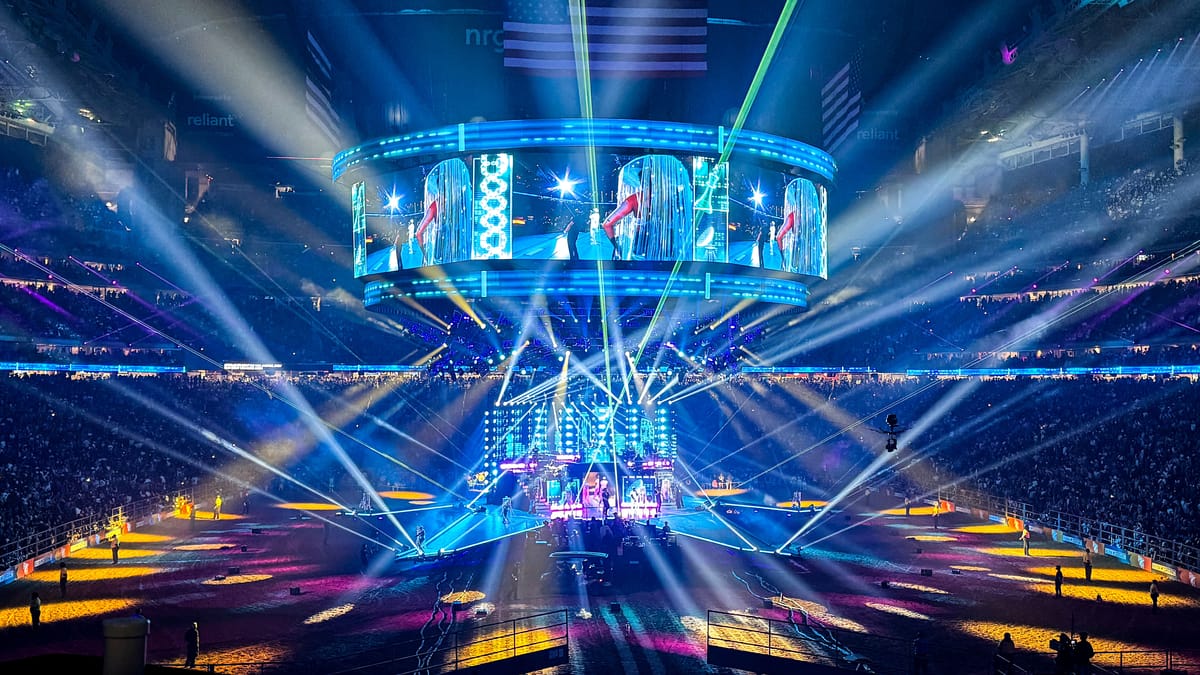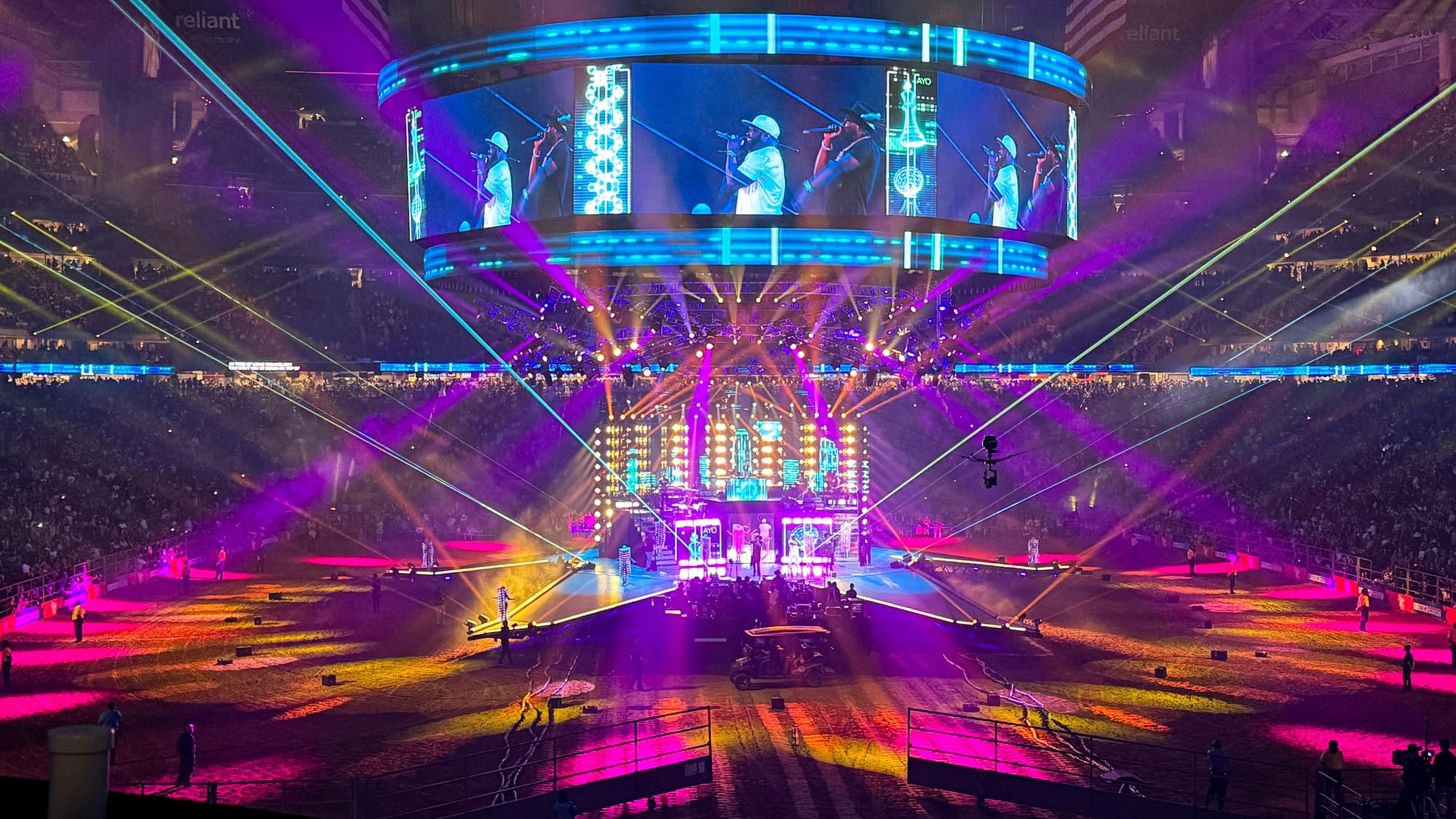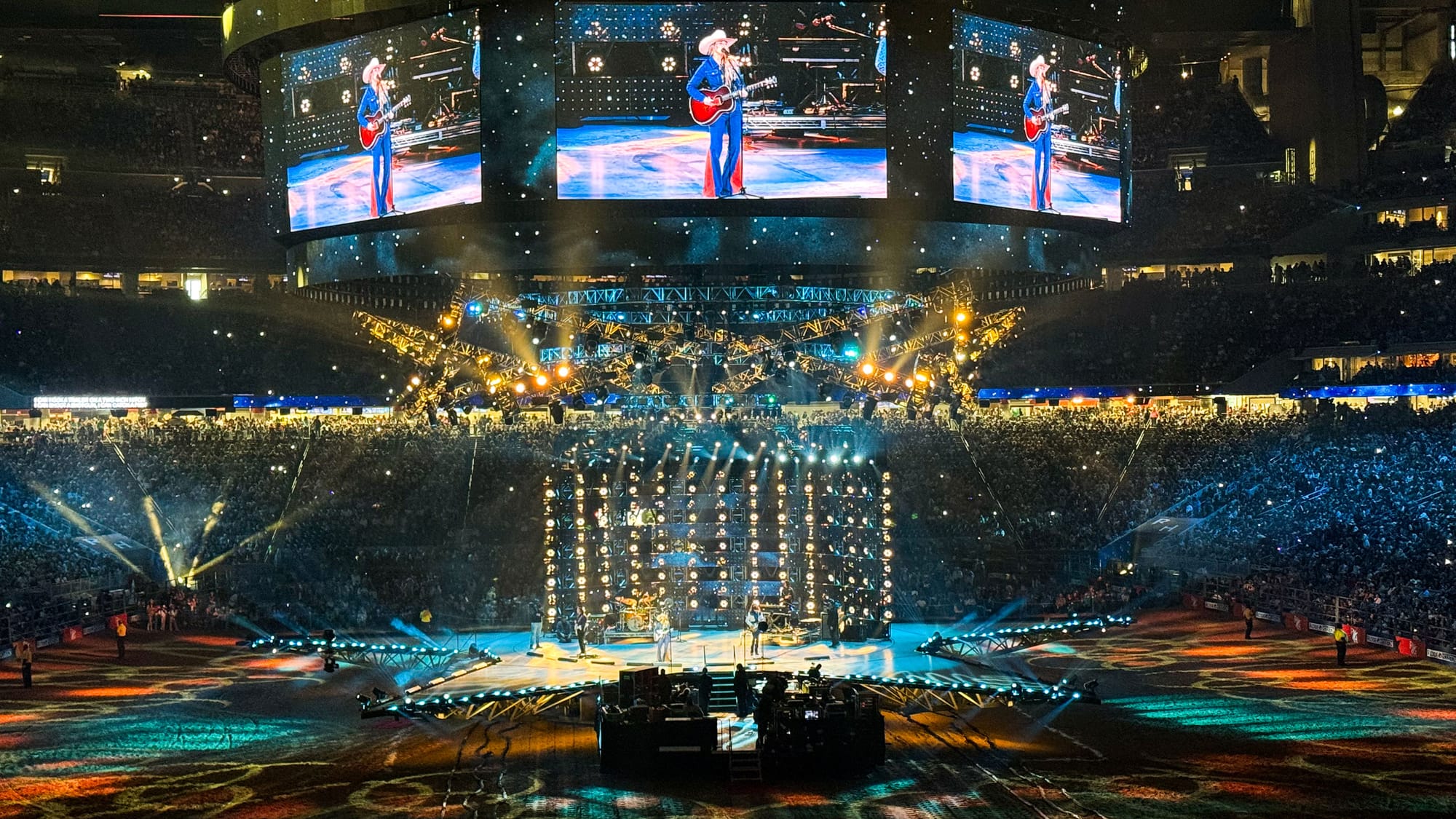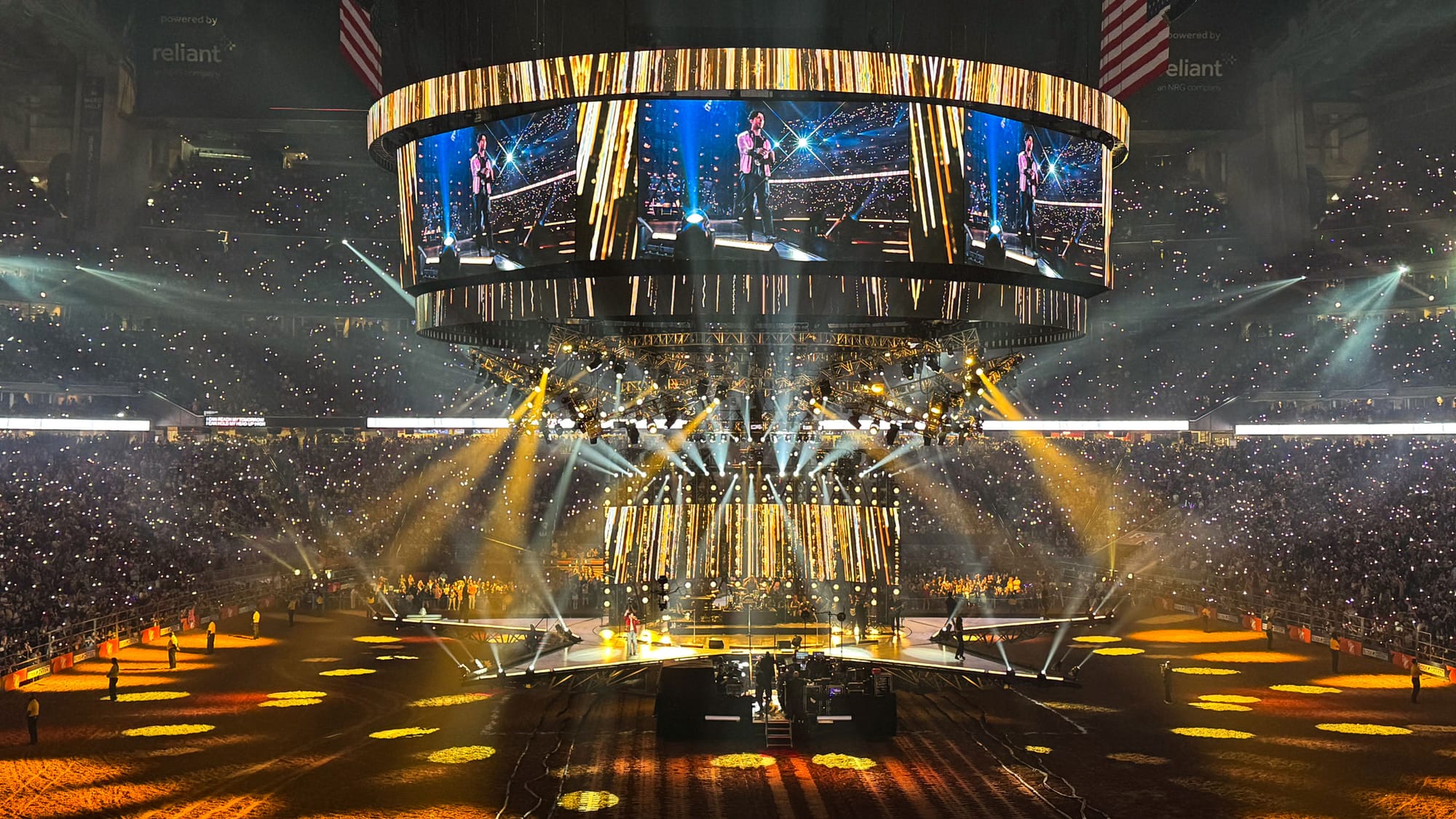Rodeo Houston

The Houston Livestock Show and Rodeo, better known as Rodeo Houston or just the Houston Rodeo, draws huge crowds every year to NRG Stadium in Houston, Texas. Over two million visitors walk through the doors to witness the rodeo events, livestock shows, arena competitions, and livestock auctions for the better part of late February and early March. There is also a major carnival and educational exhibits, and then, every night for 20 consecutive nights, the stadium is converted from a rodeo arena to a major concert stage with big-name music artists. The Rodeo has been ongoing since 1932, and for over 35 years, LD Systems has provided audio, video, lighting, and event production logistics for the event.
Texas-sized changes
Nathan Brittain has been working for LD Systems since 2010, but he started working on the Rodeo in 2014, eventually becoming the event's lead designer and lighting console programmer. His networking experience at that point had come from his college days at the University of Texas at Austin where he made his entrée into the world of routers, IP addresses, and subnet masks.
The design of the Rodeo Houston stage, lighting, audio, and video systems have evolved over the years, undergoing major updates about every four or five years. Until 2018, when the Rodeo had a significant design upgrade, which included new staging and audio, video, and lighting elements

“It's pretty phenomenal,” Brittain says. “It’s massive and very impressive.”
Just a few years ago, the lighting was controlled by a purely DMX network, but now it heavily relies on an Ethernet network to distribute the data. Brittain says the reasons for the changes were that
“The system got big enough that it became much more efficient and easier to deploy over a network instead of analog lines,” he said. “The rig previous to that one was probably somewhere in the six to eight universes realm, so it wasn't enough at that point. When we moved to that system, it grew enough that we'd really benefit from putting nodes and running fewer lines. And we're talking about a football stadium, so to run from front of house to the overhead rig is a 1500-foot cable run. So, it started to make more sense. We had done our homework beforehand and tested it [Luminex],” Brittain said. “It was pretty flawless.”

When that stage was upgraded, everything around it was also upgraded, including a new overhead rig, a new network with a fiber optic backbone, and many more nodes. At the heart of the system is a Luminex GigaCore managed switch at the front of the house with fiber runs to a switch in the catwalk, another in the overhead rig, and one on the stage. Over the stage are four Luminex Ether to DMXs 8’s, and each of the five points of the star has Luminex LumiNode 4’s, plus another seven LumiNode 4’s on the revolving stage and on the truss towers.
The Importance of Redundancy and Ease of Use
Fiber is fragile because it’s made of glass. It can’t be kinked, or it will break, nor can it be subject to crushing or rough handling.
If a cable fails, it could bring down the entire system, and in live events, that’s unacceptable. RLinkX provides a means of building redundancy in a system so that if a cable fails after 40ms, the data can take an alternate route, and the system remains working. It backs up the system and adds reliability.
“It's a dual fiber line (from the front of house) to the stage,” Brittain said, “and then dual fiber line up to the overhead. All the switches in between have dual Ethernet lines running between them. We did some testing with it,” Brittain said, “and it was just pretty much plug and play. It did it on its own. That was our first dive into Luminex. It just seemed like they were ahead of everybody on their feature set and how they were managed.”

Brittain also how easy it was to set up the switches and use their features.
“I felt like their managed switches and the way they deal with VLANs, which they call Groups, was just so simple,” he said, “and it really homed in on and was geared towards our industry. It took out the confusion and complexity. They [Luminex] found the way to separate those two, give it all the power that those have, but dumb it down for what we need in our world.”
The Groups feature allows them to segment the network into several VLANs (virtual local area networks). The Groups can be assigned for specific purposes such as audio, lighting, video, or intercom, and each Group can be assigned any number of Ethernet ports.
“Sometimes a band will bring in a floor package, and we need to supply them with just dry lines,” Brittain said. “It's flexible in that way, and it shifts from day to day. We do 20 shows in a row at Rodeo, and every day is different.”
Another feature that Brittain likes is the ability to save a setup file for each device.
“Whether it's the switch or the node, you can export that on a thumb drive and save it wherever you want,” he said. “You can also save it locally on the device. Every year, as part of our prep, we get all the devices and load their presets. When we plug everything in, it's good to go.”
Multicasting and sACN
Some of those protocols require the switch to have specific features. sACN, for example, is a multicast protocol, which requires that the switch support internet group management protocol (IGMP) snooping, and that helps to reduce network congestion by allowing lighting fixtures to subscribe to a particular DMX universe. The switch then only forwards data to the ports to which a subscriber is connected, thereby avoiding flooding ports with unrequested data. IGMP snooping requires one of the switches in a group to act as a querier, which registers the multicast packets to corresponding ports to which subscribers are connected. In Luminex GigaCore switches, it is an automated process.
Brittain said it was not difficult to become acquainted with Luminex switches. He said it was a “very easy learning curve.”
Araneo
When asked about his approach to troubleshooting issues with the network, he said the first step is to look at the Luminex Araneo app to help isolate the issue. The network management software builds a graphical layout of a Luminex network, including the connections and data flow, and it gives indications of potential issues. Besides troubleshooting, Araneo allows you to visually create a network topology and configure the settings in advance.
“During our show prep,” he said, “we use the Araneo Software to place all our devices, where they’re going to go, and put in pictures. When you show up on-site, you use that same tool to monitor and make changes.” There is also a Health Check Feature, which automatically checks critical network parameters like VLAN IDs, IGMP settings, and firmware versions to prevent configuration errors and to maintain optimal network performance. You can even modify the network configurations offline in Offline Project Mode.
Why Luminex?
“I had done a bunch of research on it,” he said, “so by the time we were using it, I felt really comfortable. But even those who hadn't done that but then got to use the gear, once we got it into our inventory, everybody picked up on it really easily. It's very intuitive.”
With the built-in redundancy, the network has been very stable. Brittain said that if any of the cables had failed and the system switched over to the backup, it happens very quickly.
“I have noticed a blip,” he said. “I happened to look at Araneo and see where we've switched over to just one line, and then after some time, it will recover and go back to the dual. I don't know if it's just a blip or a cable got loose, but I keep Araneo. It’s one of my screens at front of house. So, I can see that kind of stuff happen on occasion. But we've never had an issue in the show where we lost connection.”
With several years of experience running the system, Brittain says they have had little occasion to call A.C. Lighting for support. But when they do, he said it's always been a “positive” experience, and they are “quick to respond.” And with “such a big system that's spread around all over the place in a stadium” and “for as many years and as many shows as it's been active, it's really been pretty rock solid.”
Website: www.aclighting.com
